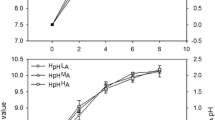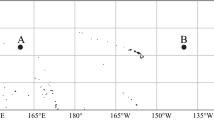Abstract
Background and Aim
In non-eutrophicated freshwaters, humic substances (HS) pose chemical stresses on aquatic organisms and, hence, separating sensitive from less sensitive or even tolerant species. One of the stresses, identified so far, is the reduction of photosynthetic oxygen production and reduction in growth in freshwater macrophytes and algae. In a previous paper, it has been shown that even closely related coccal green algae responded differently upon identical stress by HS, which is consistent with the hypothesis above. Due to their much simpler cellular ultrastructure, cyanobacteria are supposed to be more sensitive to HS exposure than eukaryote should be. One coccal green algal species (Desmodesmus communis) and one cyanobacterium (Chroococcus minutus) were exposed to four natural organic matter (NOM) isolates. One NOM has been isolated from a brown water lake (Schwarzer See) in Brandenburg State; three were obtained from a comprehensive Scandinavian NOM research project and originated from Norway (Birkenes), Finland (Hietajärvi), and Sweden (Svartberget).
Methods
Cultures of D. communis and C. minutus were obtained from the Culture Collection of Algae, Göttingen, and maintained in a common medium. The cultures were non-axenic. The algae and cyanobacteria were exposed under identical conditions to environmentally realistic NOM concentrations. Cell numbers were counted microscopically in Neugebauer cuvettes in triplicates. To avoid limitation by nutrient depletion, the experiments were terminated after 14 to 15 days. Until culture day 12, no growth limitation has been observed in the controls.
Results
All NOM isolates modulated the growth of the algae and cyanobacteria. During the early culture days, there was a slight growth promotion with the coccal green alga and to a much lesser degree with the cyanobacterium. Yet, the major effect were significant reductions in cell yield in both primary producer cultures. C. minutus was much more affected than D. communis. This applies particularly to the three tested Scandinavian NOM isolates, which were effective at concentrations even below 1 mg L-1 DOC.
Discussion
The growth promoting effect may be due to an increase in bioavailability of some trace nutrients in the presence of NOM, the release of some growth promoting substances by microbial or photochemical processing of the NOM, and/or a hormetic effect. The growth reducing effect can be explained as a herbicide-like mode of action that affects the photosystem II most prevalent by blocking the electron transport chain, absorption of electrons, or production of an internal oxidative stress after processing the bioconcentrated HS. Furthermore, it may be postulated that also phototoxicity of these HS in the algal cells contributes to the overall toxicity; however, experimental evidence is lacking so far.
Conclusions
Upon exposure to HS, cyanobacteria appear to be much more sensitive than coccal green algae and respond in growth reduction. This high sensitivity of cyanobacteria to HS may explain phytoplankton patterns in the field. Eutrophic, humic-rich lakes do not support the cyanobacterial blooms characteristic of eutrophic, but humic-poor lakes. In the humic-rich systems, raphidophytes or, less frequent, specific coccal greens are more common. Obviously, cyanobacteria appear to be unable to make advantage of their accessory pigments (phycocyanin) to exploit the reddish light prevailing in humic-rich lakes.
Recommendation
At present, no effective structure can be figured out which may be responsible for the adverse effect on the cyanobacterial species. It is reserved to future research whether or not HS may be applied more specifically (for instance, with elevated moieties of the effective structures) as a natural geochemical to combat cyanobacterial blooms.
Similar content being viewed by others
Author information
Authors and Affiliations
Corresponding author
Rights and permissions
About this article
Cite this article
Prokhotskaya, V.Y., Steinberg, C.E.W. Differential Sensitivity of a Coccal Green Algal and a Cyanobacterial Species to Dissolved Natural Organic Matter (NOM) (8 pp). Env Sci Poll Res Int 14 (Suppl 1), 11–18 (2007). https://doi.org/10.1065/espr2007.01.379
Received:
Accepted:
Published:
Issue Date:
DOI: https://doi.org/10.1065/espr2007.01.379




